A TRAVEL NEWS ARTICLE ABOUT POLAND

'WARSAW CONCERTO'
Tour-smart editor Anna Hyman and her friend Irene were actually en route to Lviv in west Ukraine, but with no direct flights from the UK they opted for a 36-hour stopover in Warsaw for a ‘taste’ of the city.

Old Town Market Square
As Irene and I headed for Warsaw’s Old Town, the haunting piano melody of the Warsaw Concerto kept running through my head. Perhaps a piece of Chopin would have been more appropriate. Chopin was born in Warsaw and, at his request, his heart is buried there. But no, it was the music from the film Dangerous Moonlight, the 1941 film in which the fictional composer of the Warsaw Concerto, a shell-shocked pilot, meets an American reporter in Warsaw. They eventually marry in America, but the pilot leaves the US to join the RAF and continue the fight against the occupation of Poland. In my mind’s eye I can still see the sleeve of my old LP – a handsome young man seated at a piano against a backdrop of a ruined city.

Another view of Old Town
After a quick hotel check-in and unpacking we set off to find the Jewish sector. Research had revealed that only traces of it would be visible among the 1950s Soviet concrete and modern hotels. We found the synagogue without too much trouble, but nothing much else. With the temperature in the high 30°s and already tired after our early morning departure from the UK, we decided we had had enough and retreated to the nearest bar for a beer. The beer was joined by a vodka, by which time we agreed that as we were comfortable and cool on the shady restaurant veranda we might as well stop for an early supper – the young people serving were fun and happy to practise their English, and the meal at the Folk Gospoda (corner of Walicow and Grzybowska streets) was reasonably priced and good. We left in a mellow mood before the bar’s evening entertainment started, but Warsaw, we decided, might be ok. Visit www.folkgospoda.pl
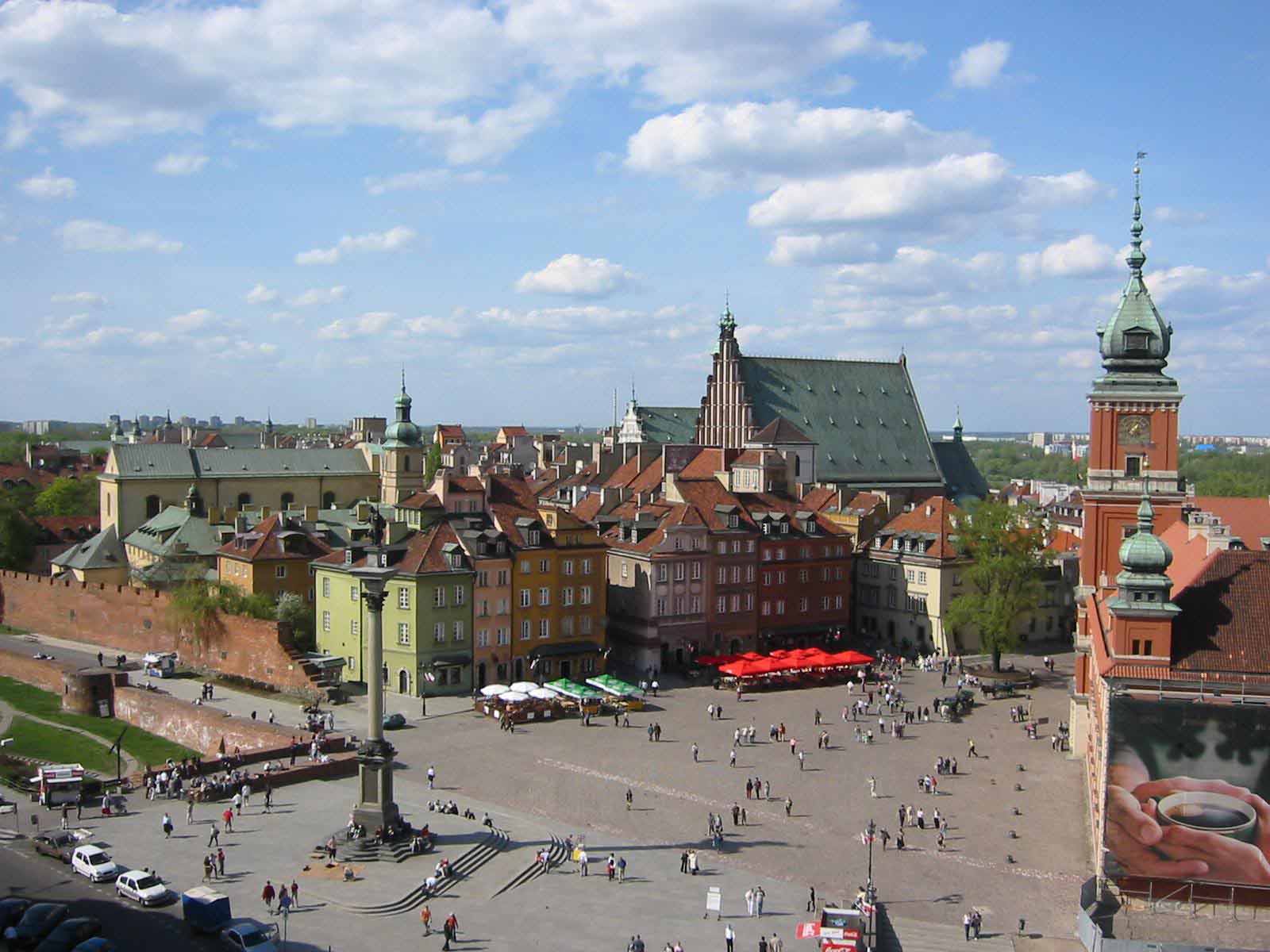
Royal Castle and Old Square
Later that evening as I read more about Warsaw’s history I learnt that during WWII nearly 450,000 people were confined in appalling conditions in the small ‘Jewish Residential District’ that we had wandered round. In July 1942 alone it is recorded that 100,00 people died. How could anybody have survived on the ‘available rations’ of about 180 calories a day? The Ghetto was eventually razed to the ground with only ruins standing as a memorial to the appalling loss of life. The next day we were to find several markers in the pavement denoting where the confining wall of this hell on earth had once stood.
But it was not just that area of Warsaw that was razed to the ground. Warsaw, over the centuries has had the misfortune of being razed to the ground, ransacked or plundered several times. The last occasion was during WWII, and more specifically following the Warsaw Uprising that began on 1 August 1944. Sixty-three days later, when the Nazis had crushed the uprising and the remaining population had been expelled from the city, virtually everything left was obliterated. Eighty-five percent of Warsaw was destroyed.
After the war and with dogged perseverance the Varsovians began to rebuild their city. Consequently, the next day when Irene and I set out to explore properly we found a city determined to survive, one that has risen phoenix-like from its ruins.
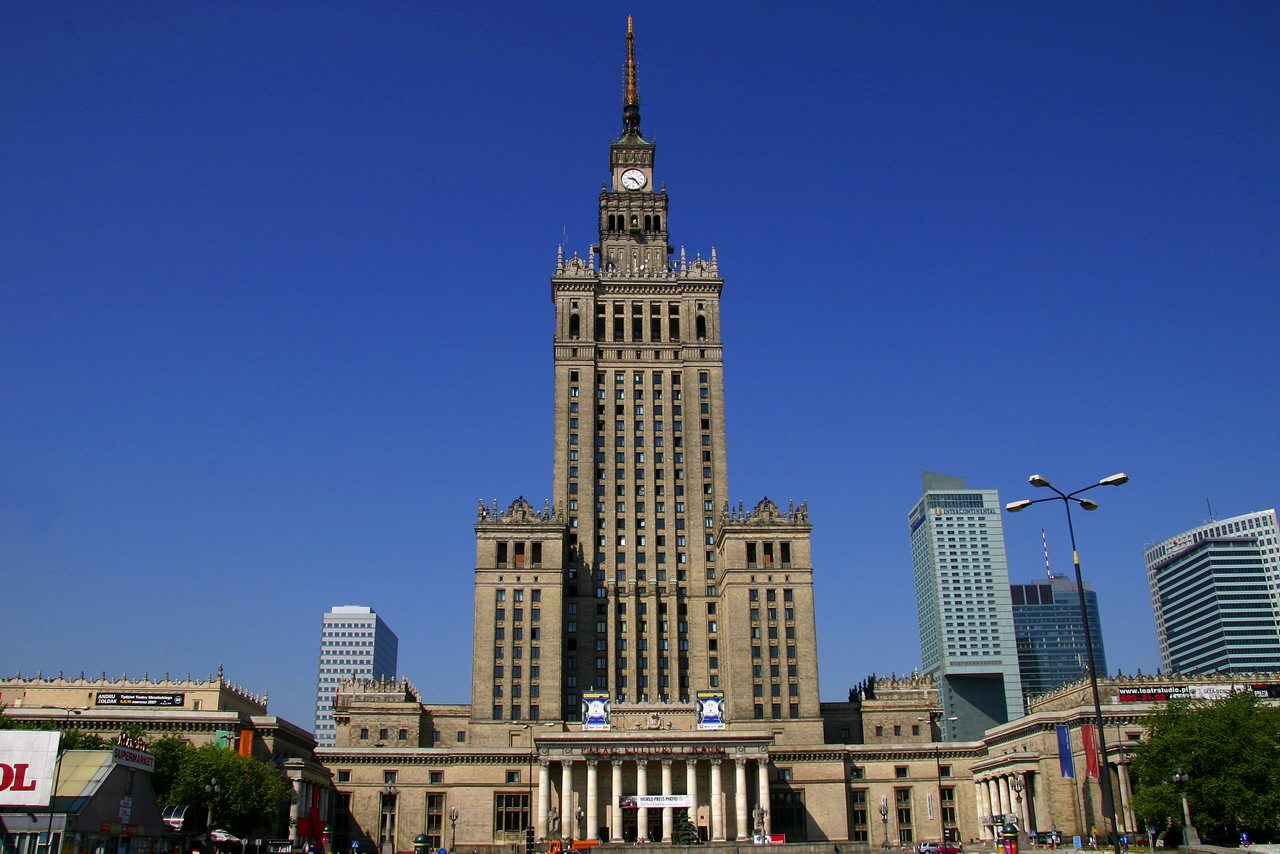
The Palace of Science and Culture
We were staying in the Polonia Palace Hotel, close to the main railway station and the Palace of Culture and Science. The latter became a useful landmark. It is one of Europe’s highest buildings and towers above the city buildings – a 1950’s ‘gift of friendship’ from the Soviet Union. The clock is a more recent addition.

Copernicus Statue
Our first objective was to find a kantor (foreign exchange office) offering a good rate of exchange. Mission accomplished, we set off along Nowy Swait and Krakowskie Przedmieście heading for the Old Town. We paused beneath the statue of Nicholas Copernicus, the Polish astronomer of the Middle Ages – one of the few things that survived the city’s destruction almost intact – before moving on to the Church of the Holy Cross where Chopin’s heart is buried. Outside the church one of the city’s musical benches played some of the great composer’s music! A few steps further on we joined the crowd outside the Radziwiłł Palace, the Polish president’s residence, that had gathered there to mourn the deaths of their president, his wife and colleagues who had died in the recent plane crash.

Radziwill Palace
Our progress, as we admired the many palaces and buildings along the route, was slow – nobody was hurrying that swelteringly hot day – involving numerous stops for refreshment, but eventually we reached the charming Old Town. It has been so cleverly reconstructed it has been recognised as a UNESCO World Heritage Site. (Its reconstruction was based on pre-war photographs and old engravings as well as a number of paintings by Canaletto.) Within its protecting walls lie the vast Royal Castle and its Castle Square, the 15th century Gothic St John’s cathedral and the magnificent Old Town Market Square packed with outdoor café tables, some of which belong to the renowned Fukier wine bar. The narrow, cobbled streets with shops selling amber and other temptations, were pleasantly shady and in one of them we spotted a long queue under the Lody sign. It proved too much for one of us, so Irene joined it and emerged a few minutes later with scoops of seriously good ice cream.

Supreme Court Building
From the Old Town we walked into the more spacious New Town. It actually dates from the 14th century but was not really developed until the 18th. I had spotted that this was where we would find the monument to the Warsaw Uprising. The powerful, moving multi-figure monument nestles in the shade of the ultra-modern Supreme Court Building, part of which is held up by three slender caryatids standing in shallow water taking the weight of the glass construction on their heads.
A few streets further on, on the edge of the leafy park of the Saxon Gardens, we came across the poignant Tomb of the Unknown Soldier. Guarding? it must have been an endurance test for the two young soldiers in their heavy uniforms in the 38º heat.
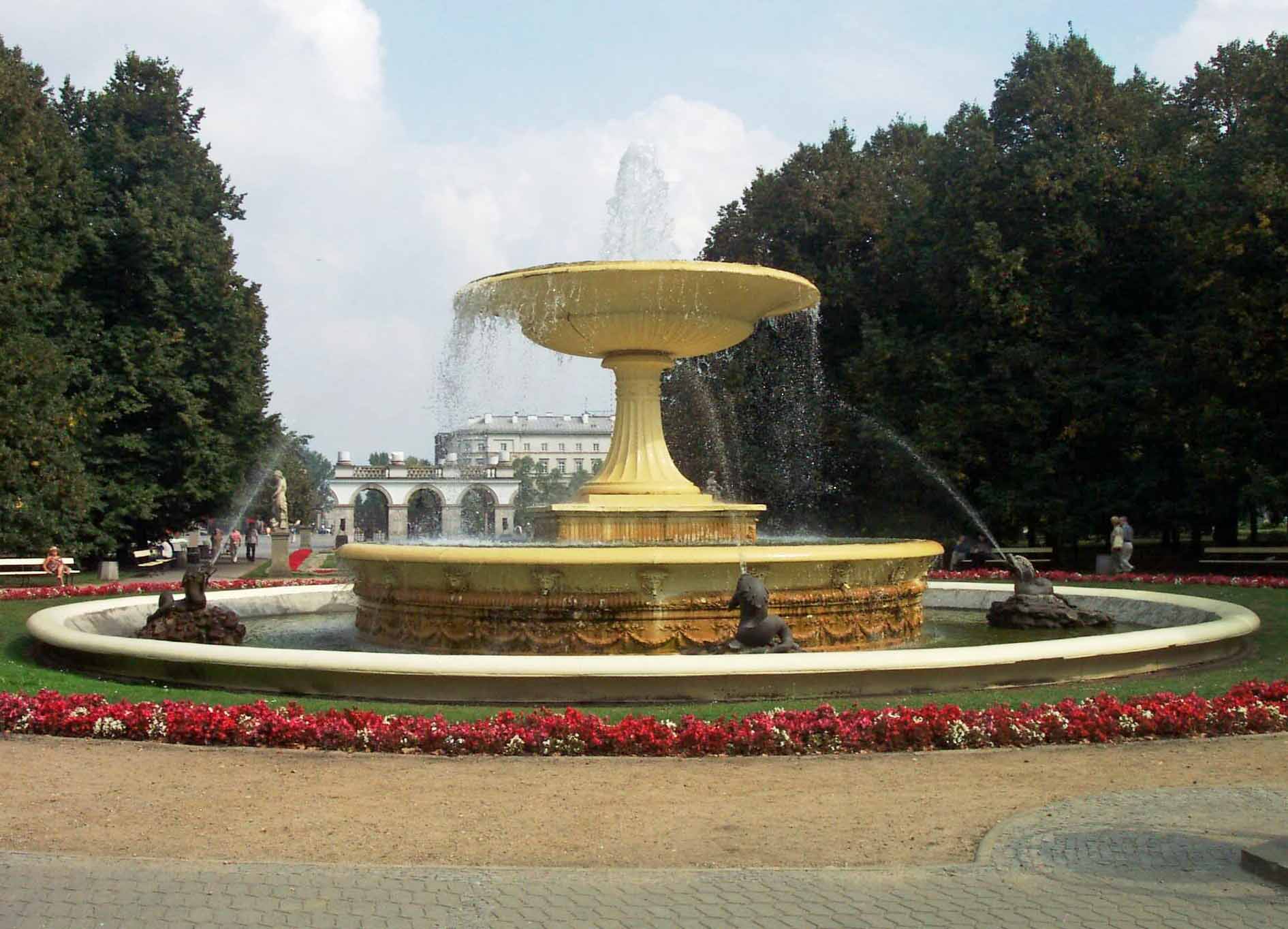
Fountain in Saxon Gardens
We were too tired to go out for dinner that evening and so headed for the restaurant in the hotel, which incidentally, provided one of the best of buffet breakfasts – lavish and excellent. We were also impressed when our waiter brought us fresh bread and a choice of five different flavoured dipping olive oils. Over dinner we discussed our day. We knew we had missed out a lot. There had been no time to go inside the Royal Castle, or the Warsaw Rising, Marie Curie or Chopin museums that we had so wanted to explore. There were the palaces that we had not even seen and we never even got a glimpse of the river Vistula or the Praga district on the opposite bank.
Our 36 hours had not been enough. We had only had enough time to dip our toes into this city that has fought so hard for its survival. We had not done it justice; it deserved better. When I return it will be for the full playing of the Warsaw Concerto, not just that haunting piano melody.
You may also like to read

ESTONIA - HISTORIC TALLINN
Award winning travel writer Sue Dobson introduces Tour-smart travellers to the delights awaiting you in Estonia .
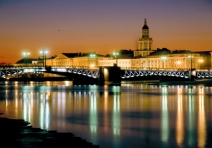
RUSSIA - ST.PETERSBURG
Tour-smart gives you a small insight to magnetic St. Petersburg. A relatively “young” city, it\'s mystery is enhanced by exciting stories, myths and legends.
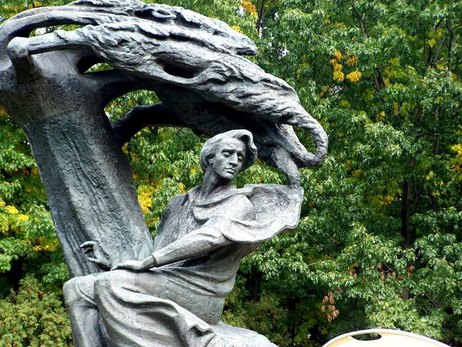
Comments